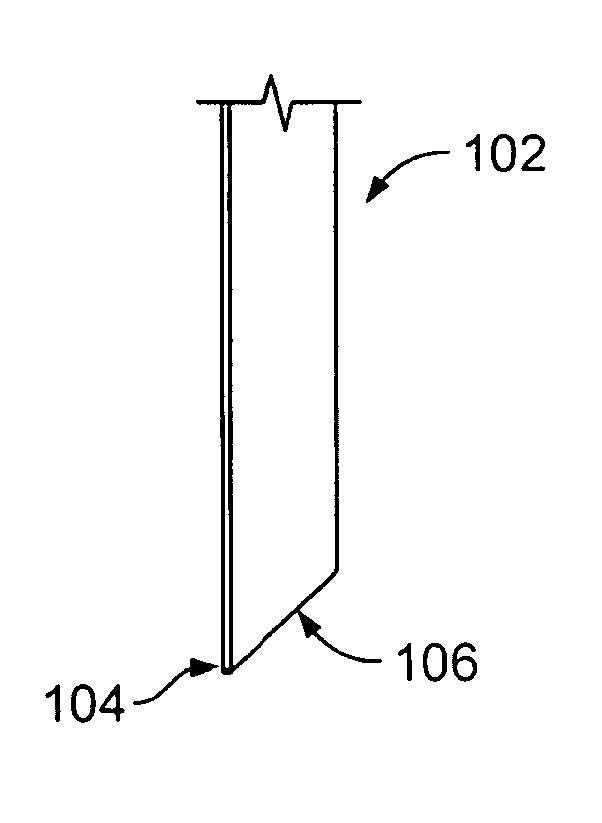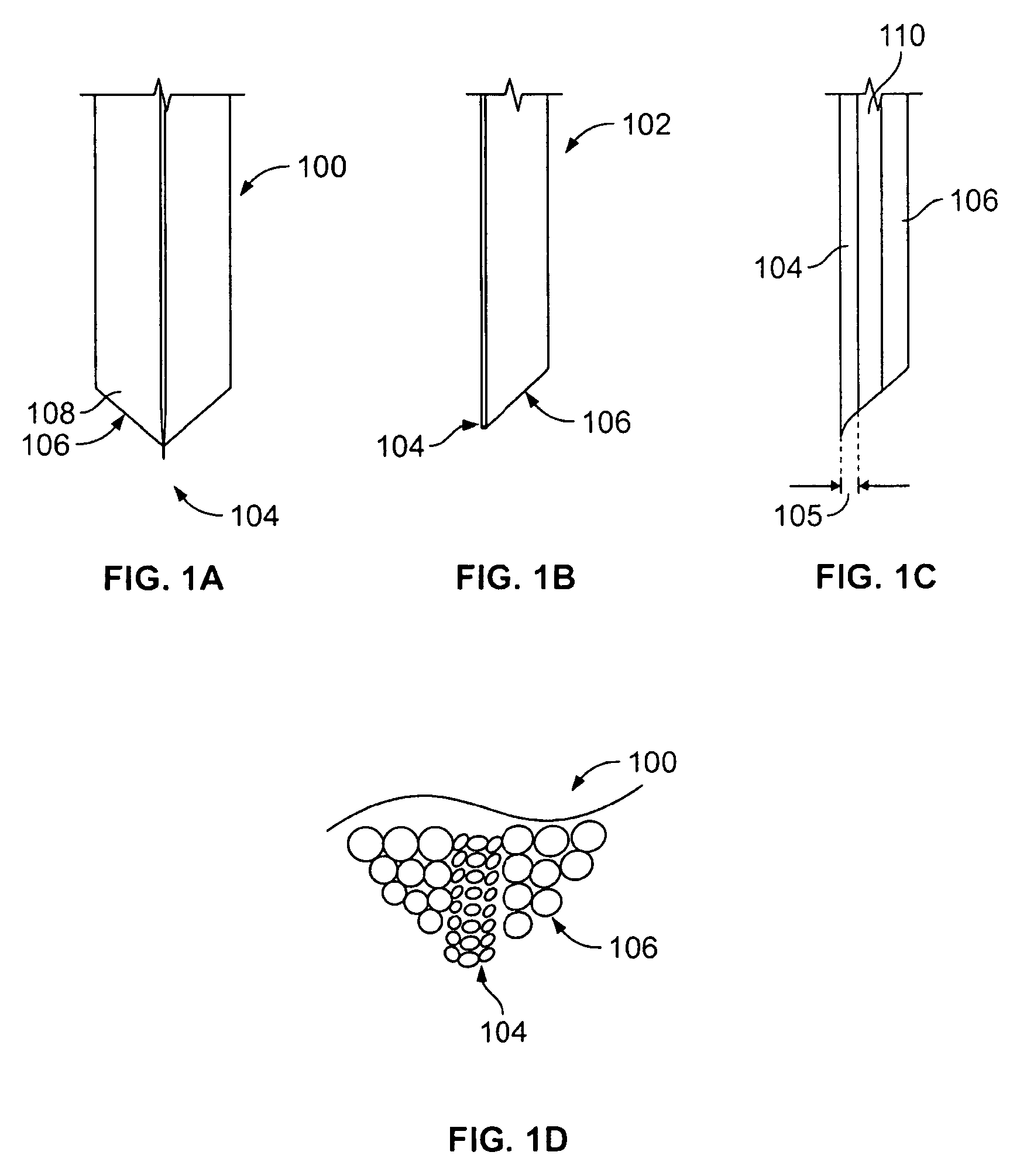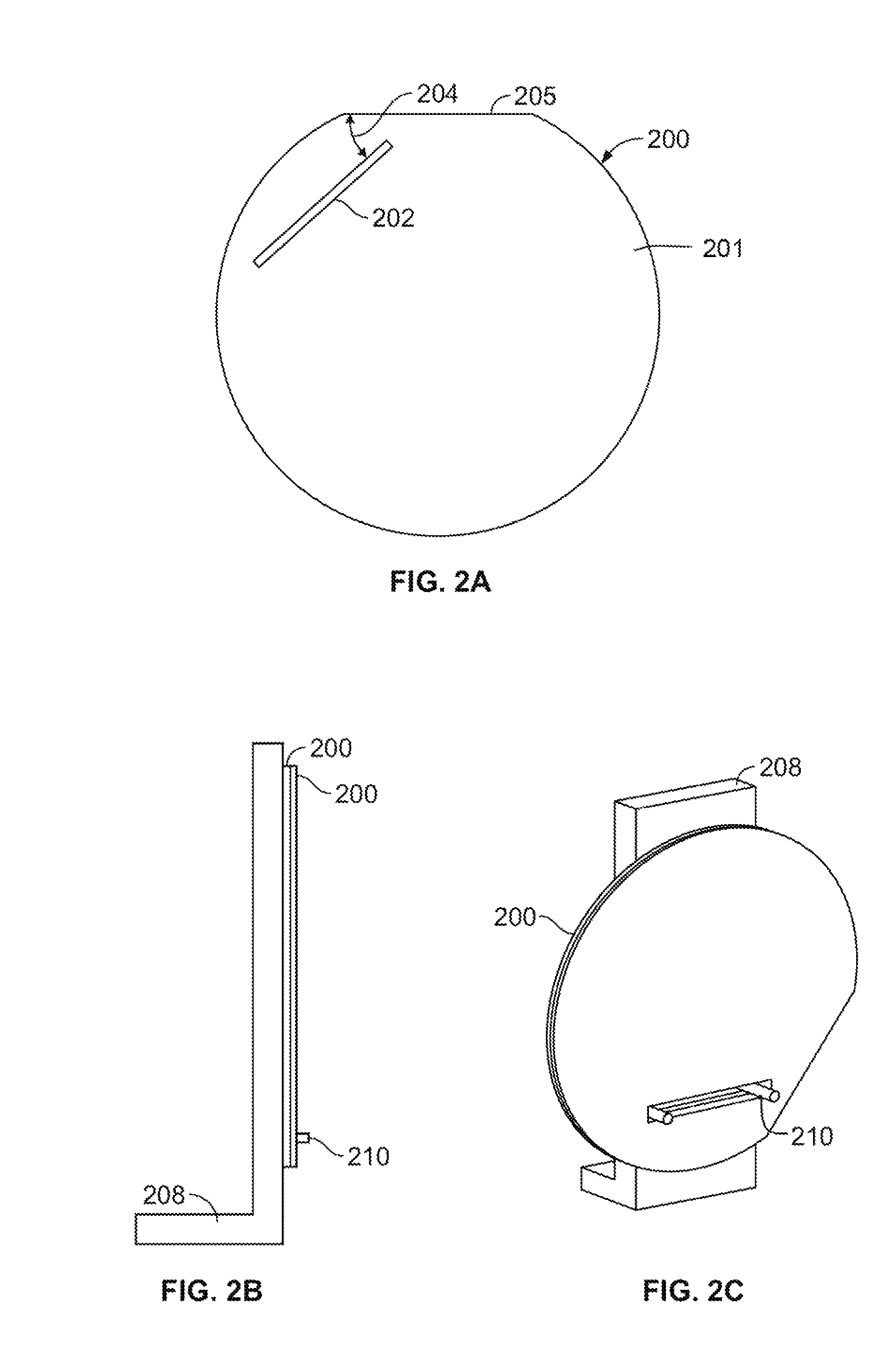Microsurgical cutting instruments
a cutting instrument and micro-sharpening technology, applied in the field of self-sharpening knives, can solve the problems of inability to use metals to fabricate micro-knife of atomic level dimensions, inability to use metals, and inability to achieve the effect of atomic level cutting accuracy and low cost of manufacturing process
- Summary
- Abstract
- Description
- Claims
- Application Information
AI Technical Summary
Benefits of technology
Problems solved by technology
Method used
Image
Examples
Embodiment Construction
[0046]FIG. 1A shows a cross sectional view of one variation of a microsurgical blade 100. The thin layer, or region of cutting, region 104 is supported on both sides by a thicker layer of a support material 106. As noted above, the cutting material 104 is a region in the knife that has a relatively low wear rate as compared to the supporting material 106. In one variation, the cutting region 104 is a discrete layer that is separate (clearly distinct) from any adjacent layer. In additional variations, the region 104 may transition to a support region 106 (having a higher wear rate). In the latter case, a transition region 110 will be located at the interface between Cutting and support regions. In another variation, mechanical support for the cutting layer may be entirely provided by a transition region, without another “support material.”
[0047]FIG. 1B shows a variation of a self-sharpening microsurgical knife 102 having a cutting region 104 supported on a single side by a supporting...
PUM
| Property | Measurement | Unit |
|---|---|---|
| thickness | aaaaa | aaaaa |
| thickness | aaaaa | aaaaa |
| thickness | aaaaa | aaaaa |
Abstract
Description
Claims
Application Information
 Login to View More
Login to View More - R&D
- Intellectual Property
- Life Sciences
- Materials
- Tech Scout
- Unparalleled Data Quality
- Higher Quality Content
- 60% Fewer Hallucinations
Browse by: Latest US Patents, China's latest patents, Technical Efficacy Thesaurus, Application Domain, Technology Topic, Popular Technical Reports.
© 2025 PatSnap. All rights reserved.Legal|Privacy policy|Modern Slavery Act Transparency Statement|Sitemap|About US| Contact US: help@patsnap.com



